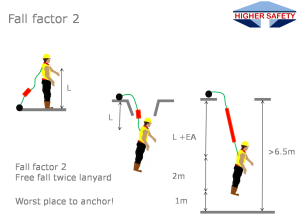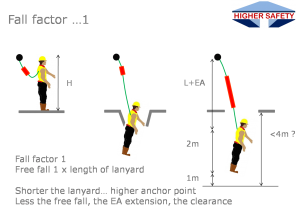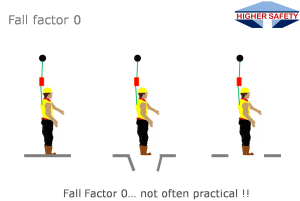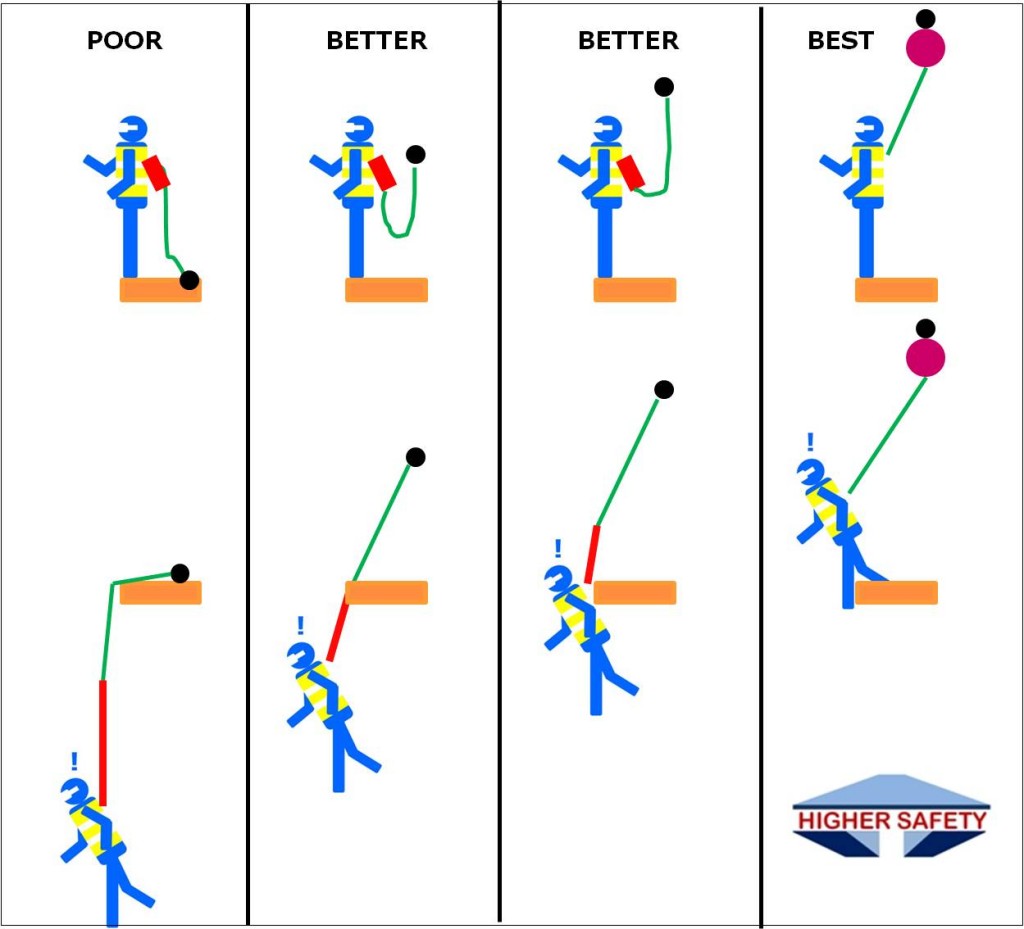Fall Factors most commonly relate to the use of personal fall protection equipment (PFPE), also know as Harness and Lanyard solutions. They are also relevant to Rope Access activity.
The fundamental principle behind Fall Factors, is the basic physics of gravity and energy. Energy is Mass multiplied by Velocity (weight x fall speed). When something falls on Earth it accelerates, increasing fall speed, under the force of gravity. It continues to increase speed until the air resistance matches the gravitational acceleration (known as terminal velocity, about 120 mph for an average human body). In most Work at Height situations we can simply say that the further you fall, the faster you are going.

Our objective is always to Minimise the Height and Consequence of any fall. By minimising the fall height, we reduce the fall speed (velocity) at the point when the arrest event starts (everything comes tight, to try and stop the faller). This reduces the fall energy, and means that we have lower loads on the faller, Minimising the Consequence and the level of potential injury. We also reduce the extent to which we “pull out” the energy absorber, and therefore the safe clearance distance needed.
 Fall Factors relate the position of the anchor point to the position of the faller before the fall occurs. They then quantify the “free fall distance” (period of acceleration) in terms of lanyard length. In this way we can see the “severity” of the potential fall and the clearance distance required below the faller.
Fall Factors relate the position of the anchor point to the position of the faller before the fall occurs. They then quantify the “free fall distance” (period of acceleration) in terms of lanyard length. In this way we can see the “severity” of the potential fall and the clearance distance required below the faller.

We should always strive to Minimise the Height and Consequence of any fall. This can be achieved by raising the anchor point and reducing the lanyard length to as short as practical.

